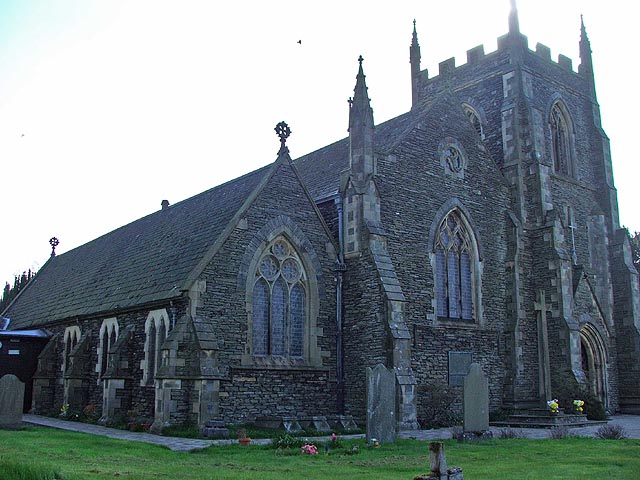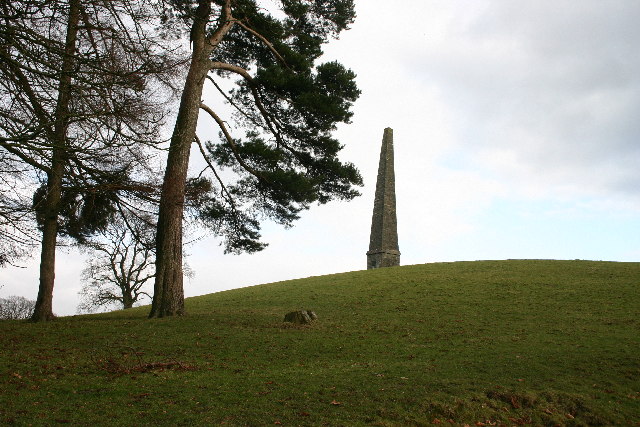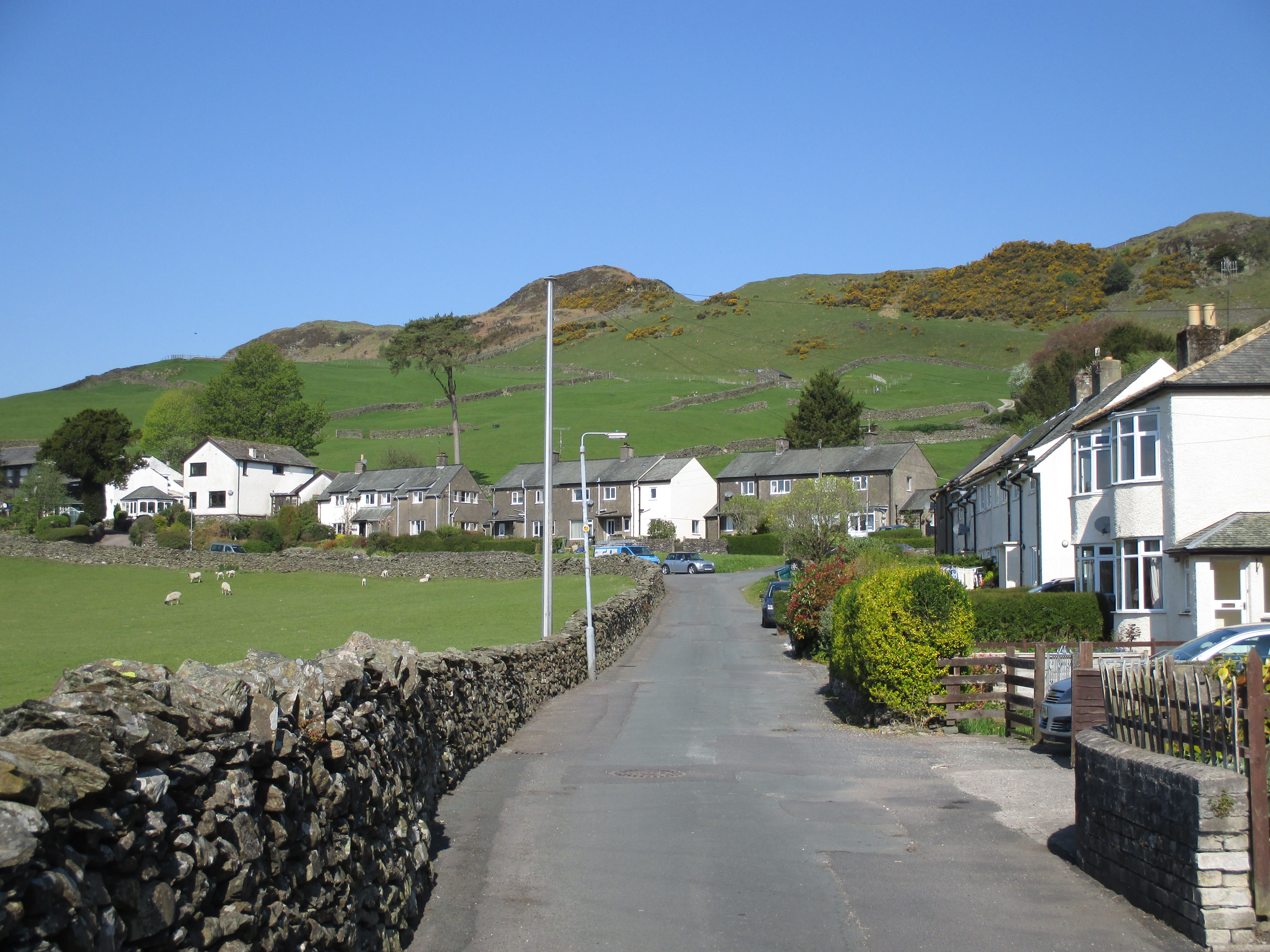|
Burneside
Burneside () is a small village in South Lakeland in Cumbria, England. It is located to the north of Kendal and to the south east of Staveley, Cumbria, Staveley, on the River Kent, just upstream from the confluence of the River Sprint. It has about 3,000 inhabitants. By the time of the 2011 Census Burneside had been transformed into an Wards and electoral divisions of the United Kingdom, electoral ward only. The population of this ward was 1,888. The majority of the population are now recorded as living in Strickland Ketel parish. Burneside railway station is situated on the Windermere Branch Line, with services to Windermere railway station, Windermere to the north west, Oxenholme Lake District railway station, Oxenholme on the West Coast Main Line, and Lancaster railway station, Lancaster to the south. Burneside is around from the M6 motorway. Politics In 1974, under the Local Government Act 1972, Burneside became a part of the South Lakeland district whose administrative ce ... [...More Info...] [...Related Items...] OR: [Wikipedia] [Google] [Baidu] |
Burneside Railway Station
Burneside railway station is in Burneside, Cumbria, England. The station is situated on the Windermere Branch Line from Oxenholme to Windermere. To the east of the station can be found the only two semaphore signals on the line guarding the manually operated road crossing. The station is owned by Network Rail and is operated by Northern who provide all passenger train services. History The station opened on 20 April 1847 as part of the Kendal and Windermere Railway. From 1880 to 1972 the station had a connection to the Burneside Paper Mills Tramway. This line was subsequently acquired by the London and North Western Railway, and became part of the London, Midland and Scottish Railway at the 1923 Grouping. The station is reached via a short approach road from the centre of Burneside village. The two original platforms were staggered, with the up platform located on the Windermere side of the access crossing, and the down platform located on the Kendal side. Designed and ope ... [...More Info...] [...Related Items...] OR: [Wikipedia] [Google] [Baidu] |
River Kent
The River Kent is a short river in the county of Cumbria in England. It originates in hills surrounding Kentmere, and flows for around 20 miles (32 km) into the north of Morecambe Bay. The upper reaches and the western bank of the estuary are located within the boundaries of the Lake District National Park. The river flows in a generally north to south direction, passing through Kentmere, Staveley, Burneside, Kendal and Sedgwick. Near Sedgwick, the river passes through a rock gorge which produces a number of low waterfalls. This section is popular with kayakers as it offers high quality whitewater for several days after rain. The village of Arnside is situated on the east bank of the Kent estuary, just above Morecambe Bay, and a tidal bore known as the Arnside Bore forms in the estuary at this point on high spring tides. The river has been used as a source of power since at least the 13th century. In 1848, the construction of Kentmere Reservoir was completed, which was ... [...More Info...] [...Related Items...] OR: [Wikipedia] [Google] [Baidu] |
List Of Works By George Webster
George Webster (1797–1864) was an English architect who practised in Kendal, Westmorland. He worked mainly in domestic architecture, designing new houses, and remodelling older houses. His early designs were mainly in Neoclassical (Greek Revival) style. He later pioneered the use of the Tudor Revival style, and in some of his latest designs he incorporated Italianate The Italianate style was a distinct 19th-century phase in the history of Classical architecture. Like Palladianism and Neoclassicism, the Italianate style drew its inspiration from the models and architectural vocabulary of 16th-century Italian ... features. He also designed some churches, all in Gothic Revival style, plus some public and commercial buildings. () Key Buildings References Citations Sources * * * {{refend Webster, George ... [...More Info...] [...Related Items...] OR: [Wikipedia] [Google] [Baidu] |
James Cropper (businessman)
Sir James Anthony Cropper KCVO (born 22 December 1938) is the former Lord-Lieutenant of Cumbria and Honorary President of James Cropper plc, speciality paper makers, of Burneside, a business founded by his great-great grandfather James Cropper in 1845. He was educated at Eton College and Magdalene College, Cambridge (BA, 1962). He served as High Sheriff of Westmorland for 1971. He was appointed Knight Commander of the Royal Victorian Order The Royal Victorian Order (french: Ordre royal de Victoria) is a dynastic order of knighthood established in 1896 by Queen Victoria. It recognises distinguished personal service to the British monarch, Canadian monarch, Australian monarch, or ... (KCVO) in the 2011 New Years Honours List. References 1938 births Living people People educated at Eton College Alumni of Magdalene College, Cambridge Lord-Lieutenants of Cumbria Knights Commander of the Royal Victorian Order High Sheriffs of Westmorland {{UK-business-bio-1930s-s ... [...More Info...] [...Related Items...] OR: [Wikipedia] [Google] [Baidu] |
Strickland Ketel
Strickland Ketel (sometimes Strickland Kettle) is a civil parish in South Lakeland, Cumbria, England. In the 2001 census the parish had a population of 1,093, increasing at the 2011 census to 1,105. It borders the north west of Kendal, on both sides of the A591 road, and is also bordered by the parishes of Underbarrow and Bradleyfield to the south west, Crook to the west, Nether Staveley to the north west, Strickland Roger to the north east, and Skelsmergh to the east. There are 16 listed buildings or structures in the parish, all at grade II. ''Enter parish name to search'' The parish includes the larger part of the village of Burneside Burneside () is a small village in South Lakeland in Cumbria, England. It is located to the north of Kendal and to the south east of Staveley, Cumbria, Staveley, on the River Kent, just upstream from the confluence of the River Sprint. It has a ..., which straddles the border with Strickland Roger. See also * Listed buildings in Stri ... [...More Info...] [...Related Items...] OR: [Wikipedia] [Google] [Baidu] |
Kendal
Kendal, once Kirkby in Kendal or Kirkby Kendal, is a market town and civil parish in the South Lakeland district of Cumbria, England, south-east of Windermere and north of Lancaster. Historically in Westmorland, it lies within the dale of the River Kent, from which its name is derived. At the 2011 Census, the town had a population of 28,586, making it the third largest town in Cumbria after Carlisle and Barrow-in-Furness. It is renowned today mainly as a centre for shopping, for its festivals and historic sights, including Kendal Castle, and as the home of Kendal Mint Cake. The town's grey limestone buildings have earned it the sobriquet "Auld Grey Town". Name ''Kendal'' takes its name from the River Kent (the etymology of whose name is uncertain but thought to be Celtic) and the Old Norse word ''dalr'' ("valley"). Kendal is listed in the Domesday Book as part of Yorkshire with the name Cherchebi (from Old Norse ''kirkju-bý'', "church-village"). For many centuries it was ca ... [...More Info...] [...Related Items...] OR: [Wikipedia] [Google] [Baidu] |
Staveley, Cumbria
Staveley () is a village in the South Lakeland district, in Cumbria, England. Historic counties of England, Historically part of Westmorland, it is situated northwest of Kendal where the River Kent is joined by its tributary the River Gowan, Cumbria, Gowan. It is also known as Staveley-in-Westmorland and Staveley-in-Kendal to distinguish it from Staveley-in-Cartmel (a small village near Newby Bridge which is now in Cumbria but was previously in Lancashire). There are three civil parishes – Nether Staveley, Over Staveley and Hugill (part). Their total population at the 2011 Census was 1,593 but this includes those living in the hamlet of Ings, Cumbria, Ings in Hugill parish. Governance Historic counties of England, Historically within the county of Westmorland, it became part of the new non-metropolitan county of Cumbria in 1974. Staveley is divided between three civil parishes; * The village south of the rivers Gowan and Kent is in Nether Staveley, * Most of the village nor ... [...More Info...] [...Related Items...] OR: [Wikipedia] [Google] [Baidu] |
River Sprint
The River Sprint is a river in Cumbria, England with its source high up on the south-facing side of Harter Fell. It flows into the River Kent just to the south of Burneside. The first two miles of the river is made up of a series of short flat sections interspersed by spectacular water falls, before it enters Longsleddale valley. When in Longsleddale, it begins to get wider as it is fed by a large number of streams (known as becks; a term derived from Old Norse). The River Sprint is the fastest rising river in England, and frequently floods in Longsleddale valley, making the road impassable. The river is spectacular at times of high flow, and is popular with canoeists and fishermen. Industry The river powered mills from medieval times to the twentieth century There were mills at Garnett Bridge and downstream at Sprint Mill near Burneside. Ecology Like other tributaries of the Kent, the Sprint is a stronghold of the white clawed crayfish, one of the reasons for the desi ... [...More Info...] [...Related Items...] OR: [Wikipedia] [Google] [Baidu] |
Windermere Railway Station
Windermere railway station serves Windermere in Cumbria, England. It is just south of the A591, about 25 min walk or a short bus ride from the lake. The station is located behind a branch of the Booths supermarket chain, which occupies the site of the original station building, in front of the Lakeland store. It is the terminus of the former Kendal and Windermere Railway single-track Windermere Branch Line, with a single platform (much longer than the trains usually seen there today) serving one terminal track. The station is owned by Network Rail and is operated by Northern Trains who provide all passenger train services. The Terrace, a row of cottages, built for railway executives in 1849, is said to have been designed by the architect Augustus Pugin. One of the fireplaces is a copy of one of his in the Palace of Westminster. The selection of the town of Birthwaite as the location of the station serving the lake was what led to it taking the name Windermere, even though ... [...More Info...] [...Related Items...] OR: [Wikipedia] [Google] [Baidu] |
Listed Buildings In Strickland Ketel
Strickland Ketel is a civil parish in the South Lakeland District of Cumbria, England. It contains 16 listed buildings that are recorded in the National Heritage List for England. All the listed buildings are designated at Grade II, the lowest of the three grades, which is applied to "buildings of national importance and special interest". The parish contains the villages of Burneside and Bowston, and is otherwise rural. The listed buildings consist of farmhouses, farm buildings, a country house and its folly gatehouse, smaller houses, a summer house A summer house or summerhouse has traditionally referred to a building or shelter used for relaxation in warm weather. This would often take the form of a small, roofed building on the grounds of a larger one, but could also be built in a garden ..., a bridge, a monument, and three milestones. __NOTOC__ Buildings References Citations Sources * * * * * * * * * * * * * * * * * * {{DEFAULTSORT:Strickland Ketel L ... [...More Info...] [...Related Items...] OR: [Wikipedia] [Google] [Baidu] |
North West England (European Parliament Constituency)
North West England was a constituency of the European Parliament. From the 2009 elections it elected 8 MEPs using the D'Hondt method of party-list proportional representation, until the UK exit from the European Union on 31 January 2020. Boundaries The constituency corresponded to the North West England region of the United Kingdom, comprising the counties of Cheshire, Cumbria, Greater Manchester, Lancashire and Merseyside. History Following the passing of the European Parliamentary Elections Act 1999, the North West of England formed one constituency from which candidates are elected using the D'Hondt method. In the election preceding that Act, MEPs were elected by the first-past-the-post method in single-member constituencies. The constituency corresponded to the following former European constituencies: Cheshire East, Cheshire West and Wirral, Cumbria and Lancashire North, Greater Manchester Central, Greater Manchester East, Greater Manchester West, Lancashire Central ... [...More Info...] [...Related Items...] OR: [Wikipedia] [Google] [Baidu] |



.jpg)


.jpg)
